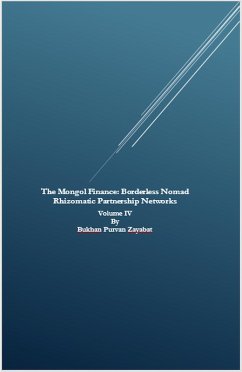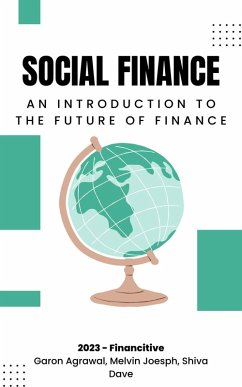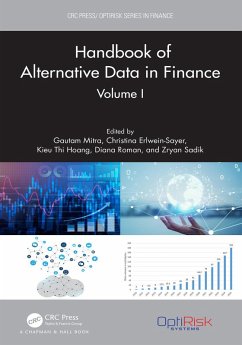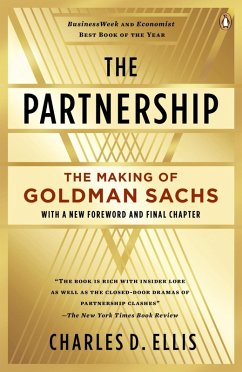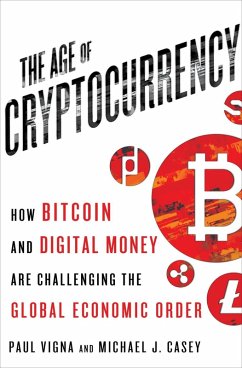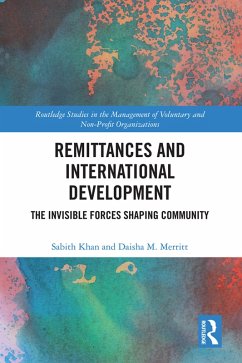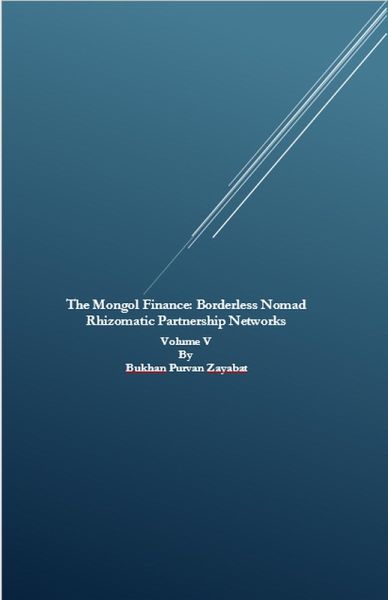
The¿Mongol Finance: Borderless Nomad Rhizomatic Partnership Networks Volume V (eBook, ePUB)

PAYBACK Punkte
0 °P sammeln!
The Mongol Finance: Borderless Nomad Rhizomatic Partnership Networks Volume V introduces a radically different tradition of economic thinkingone that neither aligns with Western finance's institutional rigidity nor Islamic finance's theological constraints. Instead, it revives and reimagines a third pathway: the nomad, rhizomatic, visionary, pragmatic, and ethical financial practices of the Mongol world, now reassembled for a planetary, digital age.In this fifth volume of the series, Mongol Finance emerges as a new brand of financebuilt not on temples, towers, or doctrines, but on mobility, tr...
The Mongol Finance: Borderless Nomad Rhizomatic Partnership Networks Volume V introduces a radically different tradition of economic thinkingone that neither aligns with Western finance's institutional rigidity nor Islamic finance's theological constraints. Instead, it revives and reimagines a third pathway: the nomad, rhizomatic, visionary, pragmatic, and ethical financial practices of the Mongol world, now reassembled for a planetary, digital age.
In this fifth volume of the series, Mongol Finance emerges as a new brand of financebuilt not on temples, towers, or doctrines, but on mobility, trust-based partnership, adaptability, and mutual regeneration. Rooted in the historical Ortoq transcontinental partnerships networks of the Mongol Empire and fused with spiritual values of Tengiriism of the Mongols, Deleuzian nomad philosophy, this book expands financial logic beyond fixed borders and centralized authorities.
Part IX: Immanence, Accelerationism & Planetary Flux unveils finance as an immanent, everyday forcedeeply embedded in social life, planetary rhythms, and ecological realities. It proposes a financial model based on non-transcendent markets, participatory assemblages, and ethical co-creation rather than speculative detachment. It then accelerates into strategic territory: tech-driven rhizomes, asymmetric growth logics, and planetary capital flows that reassemble finance as an adaptive tool in times of crisis and flux.
Part X: Borderless Nomad Partnerships Today & Tomorrow shifts toward operational design. It traces the reappearance of nomad finance in the modern era: through diasporic digital caravans, cross-border DeFi ecosystems, strategic rhizomes in private capital, and virtual corporate assemblies. These are not evolutions of the old orderthey are entirely new forms, born of decentralized infrastructure, antifragile culture, and planetary scale thinking.
Across the volume, Mongol Finance is presented not as an academic curiosity, but as a living economic code for our centurycapable of stewarding commons, regenerating in crisis, and empowering transregional alliances. The final chapters call for the formation of antifragile assemblies, modular protocols, and learning rhizomes that turn finance from a tool of domination into an ecology of cooperation.
For entrepreneurs, theorists, policy-makers, and global citizens who sense the exhaustion of current systems, Mongol Finance offers something else entirely: not an alternative finance, but a post-foundational, nomadic financial civilization. This is not Western. It is not Islamic. It is something entirely its own.
In this fifth volume of the series, Mongol Finance emerges as a new brand of financebuilt not on temples, towers, or doctrines, but on mobility, trust-based partnership, adaptability, and mutual regeneration. Rooted in the historical Ortoq transcontinental partnerships networks of the Mongol Empire and fused with spiritual values of Tengiriism of the Mongols, Deleuzian nomad philosophy, this book expands financial logic beyond fixed borders and centralized authorities.
Part IX: Immanence, Accelerationism & Planetary Flux unveils finance as an immanent, everyday forcedeeply embedded in social life, planetary rhythms, and ecological realities. It proposes a financial model based on non-transcendent markets, participatory assemblages, and ethical co-creation rather than speculative detachment. It then accelerates into strategic territory: tech-driven rhizomes, asymmetric growth logics, and planetary capital flows that reassemble finance as an adaptive tool in times of crisis and flux.
Part X: Borderless Nomad Partnerships Today & Tomorrow shifts toward operational design. It traces the reappearance of nomad finance in the modern era: through diasporic digital caravans, cross-border DeFi ecosystems, strategic rhizomes in private capital, and virtual corporate assemblies. These are not evolutions of the old orderthey are entirely new forms, born of decentralized infrastructure, antifragile culture, and planetary scale thinking.
Across the volume, Mongol Finance is presented not as an academic curiosity, but as a living economic code for our centurycapable of stewarding commons, regenerating in crisis, and empowering transregional alliances. The final chapters call for the formation of antifragile assemblies, modular protocols, and learning rhizomes that turn finance from a tool of domination into an ecology of cooperation.
For entrepreneurs, theorists, policy-makers, and global citizens who sense the exhaustion of current systems, Mongol Finance offers something else entirely: not an alternative finance, but a post-foundational, nomadic financial civilization. This is not Western. It is not Islamic. It is something entirely its own.
Dieser Download kann aus rechtlichen Gründen nur mit Rechnungsadresse in A, B, CY, CZ, D, DK, EW, E, FIN, F, GR, H, IRL, I, LT, L, LR, M, NL, PL, P, R, S, SLO, SK ausgeliefert werden.





